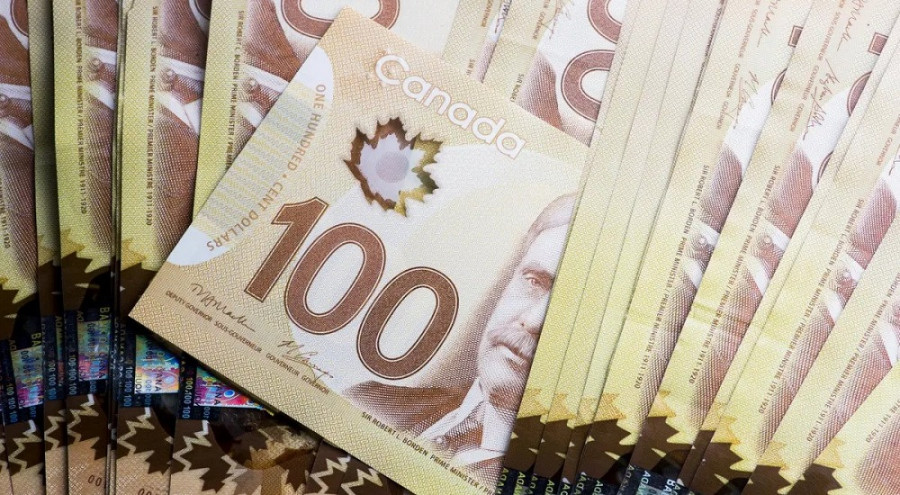On Wednesday, the USD/CAD pair tested the 38th figure, the first time since last October. Bulls failed to settle in this price area, but the uptrend is still in force. The greenback slightly retreated ahead of Friday's Nonfarm, but there are no prerequisites for a trend reversal and none of them are in sight. The main trump card for USD/CAD bulls is the sharp divergence in expectations regarding the actions of the Federal Reserve and the Bank of Canada. The Canadian central bank finished the current cycle of rate hikes, while the Fed toughened its rhetoric on the threshold of the March meeting. Such cross-correlation pushes up the loonie, which is systematically, but steadily moving towards the main target - 1.3900.
The Bank of Canada took a pause
The Bank of Canada summed up the results of its meeting (the second one this year). Following the results of the previous (January) meeting, the central bank increased the rate by 25 basis points, but actually announced the end of the current cycle of monetary tightening. Bank of Canada Governor Tiff Macklem hinted transparently that further interest rate hikes "may not be necessary" because according to the central bank's forecasts, "economic growth will slow down while inflation will fall". After the meeting, Macklem outlined the central bank's intentions in a more straightforward way, saying that now it is time to pause so it can assess whether monetary policy is sufficiently restrictive.

In other words, the Bank of Canada's decision in March was not sensational for USD/CAD traders. The central bank announced that it left the benchmark interest rate unchanged at 4.5%. In the accompanying statement, the central bank specified that it intends to keep the rate at the current level, provided that the economy develops in accordance with its forecasts. First of all, we are talking about the dynamics of inflationary growth. According to the latest data, the Consumer Price Index in Canada has been consistently declining for the past 7 months (in annual terms). In July last year, the index reached its peak at 8.1%, after which the CPI has gradually declined to the current value of 5.9%. However, an accompanying statement said that the latest economic data "remain in line with expectations" of the bank. According to those expectations, overall inflation will fall to an estimated 3% in the middle of the year.
Admittedly, the sharp rise in the pair this week was due to the hawkish rhetoric of Fed Chairman Jerome Powell (who said that the U.S. central bank is ready to accelerate the pace of interest rate hikes and is also ready to raise the cap on the current monetary tightening cycle). While the results of the Bank of Canada meeting in March only played a supporting role: the widely-announced decision to end (suspend) the cycle was played back much earlier.
Dovish rumors and "Canadian Nonfarm"
Take note that now there is talk of a different plan - that the Canadian central bank may reduce the rate in the second half of this year. A survey showed that the median forecast for the rate by the end of 2023 was 4%, the central bank is expected to reduce the rate by 50 basis points. Commenting on these rumors, Macklem said that it is "too early to talk about any steps in the opposite direction". Such vague wording suggests that the Bank of Canada theoretically does not disregard a dovish scenario (for example, the Fed categorically denied similar rumors).
In this context, the Canadian Nonfarm, which will be released on Friday, takes on particular significance. Weak data in the Canadian labor market may reinforce the market's dovish expectations about the Bank of Canada's future actions.
According to preliminary forecasts, Canada's unemployment rate rose slightly (to 5.1%) in February, and the number of people employed rose by just 6,000 in February after a 150,000 gain in January. The labor force participation rate is projected to fall to 64.9%. If the figure comes out at this level, it will be the weakest result since last November.
It is worth noting that at the same time as the Canadian release, a similar report will be released in the U.S. If both reports are in line with the forecasts, bulls will have reason to build another rally. The nearest target is 1.3820 (the upper line of the Bollinger Bands indicator on the D1 chart). The main target is higher, at 1.3900 (also the upper line of the Bollinger Bands indicator, but already on the MN chart).
The material has been provided by InstaForex Company - www.instaforex.comfrom Forex analysis review https://ift.tt/qxs0GTl
via IFTTT
